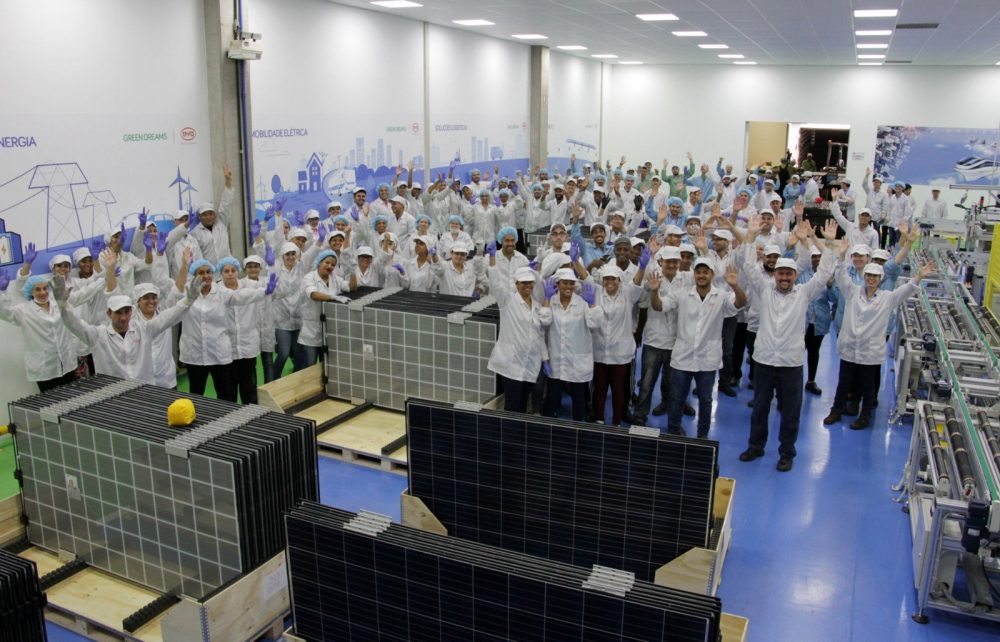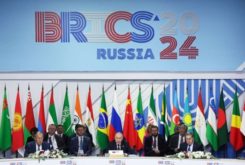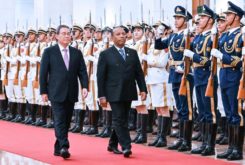Chinese companies operating at all levels of the solar photovoltaic (PV) sector have clearly identified Brazil as a key market for overseas expansion. JinkoSolar and BYD are rapidly increasing their solar module manufacturing capacity in the country, while the latter has joined CGN as solar farm operators. Despite the anti-environmental stance of President Jair Bolsonaro, a range of Brazilian state organisations and regulators have swung their support behind the renewable energy boom that looks set to revolutionise power production in South America’s biggest country.
China’s JinkoSolar Holding Company, which has operated in Brazil since 2012, announced in January that it could sell 1 GW of solar panels in Brazil in 2020, ramping up sales quickly over the course of the year, with just 100 MW in the first quarter. Its 400W units are being distributed in Brazil by Aldo Solar. This compares with JinkoSolar’s expected global sales of 20 GW, up from 16 GW in 2019. A total of 1.3 GW of solar distributed generation (DG) was added to the Brazilian grid in 2019, with JinkoSolar taking a 12% share, but its 1 GW target should give it a much bigger slice of the market, even if as expected the overall market grows rapidly.
JinkoSolar’s general manager of for Latin America, Alberto Cuter, said: “The Brazilian DG market is actually growing impressively and represents the first key market for Jinko in Latin America. We are delighted that Aldo Solar, one of the most professional and experienced distributors in Brazil, decided to put their trust in the superior quality of Jinko Solar Modules for this huge distribution agreement.”
Traditional power sectors rely on large power plants generating electricity that is then transported via the grid to commercial and residential consumers, with a proportion of that electricity lost in transmission. DG projects are still connected to the grid but involve much smaller generation projects, with a far higher proportion of electricity sold locally because of the much higher number – and wider distribution – of power plants. Transmission losses are therefore much lower. DG is usually not a commercial option for traditional thermal power plants – fired by coal, gas or oil – but is now becoming much more popular because of the renewable energy boom.
It works particularly well with solar photovoltaic (PV) projects, on which costs have fallen very rapidly because mass production has reduced manufacturing costs at the same time as solar cells have become more efficient – that is, they are able to turn a higher proportion of the sunlight that falls upon them into electricity. There is little sign of these efficiency gains coming to an end, so it seems unlikely that any new gas or coal-fired power plants will be able to compete with solar and wind power in a decade’s time.
According to figures from the Brazilian Association for Solar Photovoltaic Energy, ABSOLAR, national solar DG capacity reached 2 GW in January, from 171,000 connected arrays. Solar PV accounts for 99.8% of all Brazilian DG generating capacity, with 72.6% owned by residential consumers and 17.99% by commercial operators. Minas Gerais has more DG connections than any other state. Brazilian solar power production was 16% higher at the start of this year than at the beginning of 2019.
Solar advantages
Governments usually want to retain a proportion of thermal generating capacity in their generation mixes because solar and wind power production is intermittent, whereas coal and gas plants offer baseload – or generally constant – power production. However, battery storage is becoming cheaper and more effective, with ‘solar plus battery’ projects now being developed, including in the United States, so even this advantage for thermal plants is likely to disappear over the next few years.
While the environmental advantages of renewables, in terms of much lower carbon emissions and air pollution, are well known, the commercial benefits are now being taken on board even by governments with more interest in economics than the environment.
This could explain President Bolsonaro’s attitude to plans by the power regulator, Agência Nacional de Energia Elétrica (Aneel) to tax solar power production. He has been a strong opponent of environmental regulation, including restrictions on the oil and gas sector, but tweeted on 6 January that he opposes the taxation plans and that the government would legislate to block it. Support has also come from the House of Representatives’ Finance and Taxation Committee, which has approved the introduction of incentives for renewable power investment by farmers.
In December, the Brazilian Chamber of Foreign Trade, Camex, agreed to exempt imported solar cells – used in solar panel manufacture – from import tariffs, although Bolsonaro is concerned about the impact on government finances. More establishment support came at the start of January, when Brazil’s development bank, BNDES, agreed to lend US$322.9 million to Iberdrola, providing 80% of total construction costs on 370.8 MW of wind farms in Paraiba state that are due to come on stream in 2022. The European Investment Bank is providing another €250 million to support 520 MW of new Iberdrola wind power capacity in Brazil.
BYD looks to PV and electric vehicles
JinkoSolar is not the only Chinese firm to identify opportunities in the Brazilian solar power sector. Shenzhen’s BYD, which is best known in the electric vehicle sector, including for battery manufacture, is to double its solar panel output at its Campinas factory from 1 February. The firm’s marketing and sustainability director for Brazil, Adalberto Maluf, said that falling component costs and the attractiveness of the Brazilian market had prompted the decision. BYD opened its first factory in Brazil in 2015 and hopes to increase its market share from 20% last year to 35% in 2020.
As well as selling its solar panels, BYD is developing its own generation projects, including the Araçatuba solar plant in São Paulo state, to supply commercial customers. Until 2018, it only sold its solar modules to big projects but that year began working with Aldo Solar to market its products to the DG market. It now works with a variety of distributors in the country, including Alsol, with whom it markets an integrated 400 kW solar unit with a 1.36 MWh battery. This allows electricity produced during the day to be stored for use in the evening, during peak residential demand.
BYD is to build a new lithium battery factory in Brazil to supply electric vehicles, including bus fleets in São Paulo, Brasilia and other cities. It delivered its first pure electric buses to São Paulo at the end of 2018, with electricity supplied by BYD’s own solar project. BYD’s lithium batteries enable the vehicles, each with the capacity to carry 80 passengers, to cover 250km on a single charge. More than 45,000 BYD buses now operate around the world.
The firm says that it is the world’s biggest manufacturer of lithium batteries and pure electric vehicles. The company’s vice president of sales for Brazil, Wilson Pereira, commented: “Our recent deliveries, not only in the Brazilian market, but also in Chile, have made BYD the leader in the electric bus sector in South America.” São Paulo’s maximum air pollution and carbon emission levels are being decreased every year by the city council, encouraging the uptake of electric buses.
Last June, China’s CGN Energy International Holdings announced that it had bought 540 MW of Brazilian renewable energy generating capacity from Italy’s Enel for US$776 million, comprising the 292MW Nova Olinda and 158MW Lapa solar projects, plus the 90 MW Cristalandia wind farm. CGN will take over the three 20 year power purchase agreements (PPAs) with a price of about $0.08/kWh that run until 2035, with Enel continuing to provide operation and maintenance support on the three projects. The Italian company intends to use the proceeds to develop new renewable energy projects in Brazil. It is already building the 475 MW São Gonçalo solar park, which is expected to come on stream this year.
Renewable energy boom
Projects defined as providing renewable energy by Annel accounted for more than three-quarters of the new generating capacity added to the Brazilian grid last year: adding up to 4,839 MW out of the 7,246 MW installed. However, large hydro schemes accounted for part of that and large hydro is not regarded as a renewable energy technology by many organisations because of the impact of construction on flora and fauna, and displacing those living in the affected area. Nevertheless, wind farms accounted for 971 MW of new capacity and solar for 551 MW. Wind and solar now contribute 9% and 1.5% of the country’s total generating capacity of 170 GW respectively.
Although wind power is still the leading renewable energy technology in Brazil, there are signs that solar power is catching up. Aneel has launched a licensing round for renewable energy projects to be awarded 20 year PPAs, plus 30 year PPAs for hydro projects, commencing in 2024. The range of bidders has already been revealed, with 51,438 MW included in the bids, of which 20,825 MW comes from 659 wind schemes, plus an incredible 28,667 MW from 794 solar projects.
Aneel’s last licensing round, which concluded on 14 January, sanctioned 1,162 MW of new capacity. Wind was the big winner, with 39 wind farms due to provide 878 MW. Similarly, the wind sector took 1,040 MW out of the 2,245 MW licensed in October. Global offshore wind development remains concentrated in the UK and other parts of the North Sea but is beginning to take off offshore the United States and now Brazil’s Neoenergia hopes to oversee the development of three big projects offshore the Brazilian states of Rio de Janeiro, Rio Grande do Sul and Ceara.




